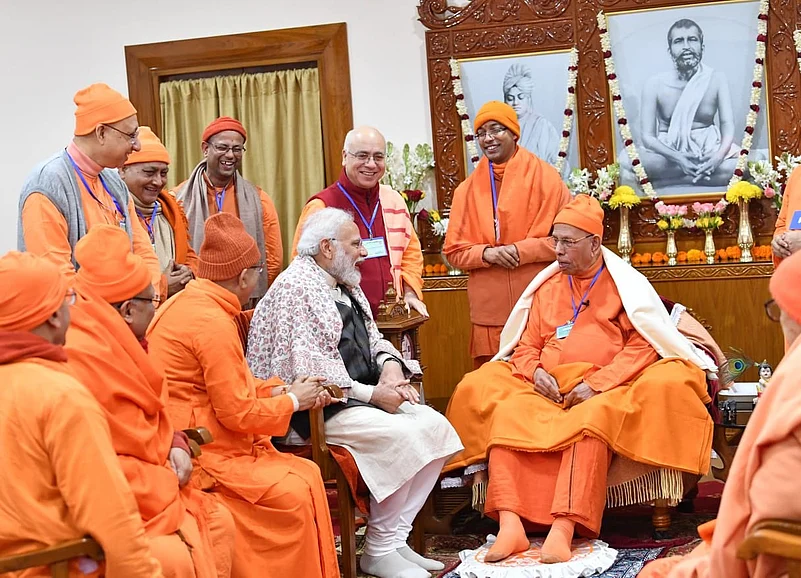One of the most powerful statesmen in the country aspired to become a Yogi once, not in the same sense he wanted. The failure, in the end, led him to become the most powerful statesman in India today.
Many years ago, I went to a boarding school guarded by high walls, run by saffron-clad monks. Outside the walls, there was a poor Muslim village. Hatred burned like vitriol between the village and the ashram. The village accused the ashram of taking their land by force.
Inside the ashram, the boys sweated at cricket and football, cracked science and mathematics chasing golden careers, and meditated to the aroma of flowers. Inside incense-drugged prayer halls, they prayed to three deities: The Happy Bearded One, the Great Saffron One, and the Melting Mother. When Vedic chants flooded the prayer hall, the music of Azaan cut through the fluttering curtains. The walled citizens of the monastery looked down on the village, its dustiness, its poverty, its call for Azaan several times a day.
But I went there many years ago, when saffron, though a political colour, was nothing like what it is today in India. Not in Bengal, where this school was situated. Back in those days, hostility took the form of bursting crackers over cricket matches. Sometimes, when India played Pakistan, we imagined the Muslim village bursting crackers when Pakistani bowlers got wickets when Pakistani batsmen scored sixes.
Did they, really? Probably not. But that was the colour of Islamophobia in bhadralok Bangali life, among its nerdy princelings. The evening of the demolition of the Babri Masjid was a dark one, but the quiet had loomed heavy, smothering the storm within. Back in those days, the flowing saffron of the monks stood far outside the pale of electoral politics.
Many years later, a love story came to me. A story of love between two teenage boys in a boarding school surrounded by high walls, a forbidden love that drew the softly smiling support of a charismatic monk, love that hid sweetly in the cotton folds of saffron celibacy. "One day everyone will learn to renounce," a monk had whispered in the story. "One day all will turn saffron."
Past and present mingle hauntingly in fiction, sucking in the ghost of the future. Was the monk prophetic? He was speaking in the last decade of the 20th century. What did he mean when he said, one day, the whole nation will turn saffron? At a time when saffron was not the loud colour of politics, it would become one day?
Yesterday, on January 12, the 157th birthday of the Great Saffron One, the arcane prophecy came full circle. The most powerful statesman of the nation visited the ashram headquarters by the Hooghly River, spent the previous night there, and paid his tribute to the turbaned saffron prince in the morning on his birthday.
Presiding over the event that honoured him, the chief monk of the order told an audience of eager students that this leader had once aspired to be a monk – a Yogi, in the tradition of this Great Saffron Order. He did not become a Yogi, not in the same sense he wanted. The failure, in the end, led him to become the most powerful statesman in India today. But his respect for the Great Saffron One burns just as bright as it did then.
Many years ago, there was a time when the saffron of the ashram in the high walls outside the poor Muslim village did not touch the kind of politics that rocked the nation and shaped its legislatures. Yesterday, that gap closed. It joined the colour of saffron into whose folds most of the nation has finally entered.
For some of us who were once eager boys just as those who gathered to hear the great statesman, this was beyond imagination.
(Saikat Majumdar is the author, most recently, of The Scent of God (2019), the story of a monastic order. @_saikatmajumdar. Views expressed are personal)
















